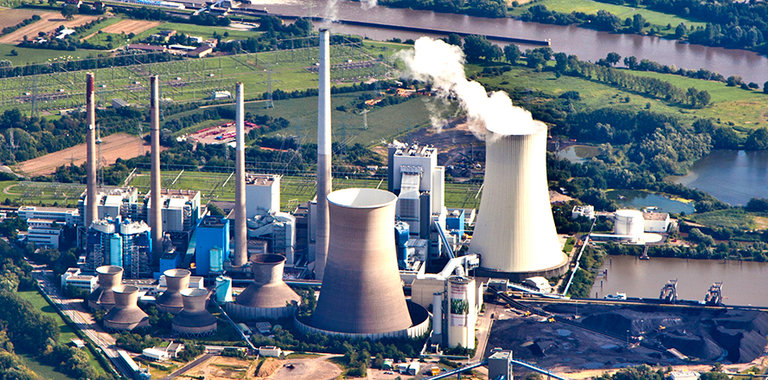
The High Price of Inefficiency in Asset-Intensive Industries
In asset-rich industries, operational outcomes are directly correlated to asset performance. That’s why industries such as oil and gas and power monitor the performance of critical assets with, for example, condition monitoring solutions for turbines. These solutions have enabled reliability, availability, and risk mitigation on crucial assets where the consequences of failure are very high. In turn, these solutions have helped to improve overall operational performance.
New solutions are expanding these capabilities beyond critical equipment to include balance of plant assets. That’s because balance of plant assets have a collective and significant impact on critical asset performance. These expanded solutions open up powerful–and often undervalued and underleveraged--possibilities for oil and gas and power operations. The possibilities are tied to the very obstacles that have historically prevented balance of plant asset management: scale and complexity. In oil and gas operations, hundreds or thousands of pumps are used. Thus, even incremental improvements in pump performance can have significant sway on overall outcomes. For example, pumps that power cooling towers can impact the performance of condensers, a critical asset category in operations. Traditionally, however, the monitoring and optimization of pump performance have not been feasible due to scale and the inherent limitations in manually collecting, analyzing, and acting upon volumes of data.
Today, artificial intelligence (AI)-powered solutions, using algorithms and automation, are enabling plant personnel to optimize balance of plant asset performance with impressive results, most notably in asset-rich industries.
Across asset-intensive industries, inefficient machines incur steep and often silent costs. On average, underperforming assets consume 12-15% more electricity. Further, they can amplify risk. In the continuous operations of oil and gas and power, the interconnected nature of assets creates unplanned downtime vulnerabilities stemming from both critical and non-critical equipment. Unplanned downtime creates elevated levels of waste and loss; various estimates indicate annual costs from unplanned downtime at about USD $1 trillion.
While the payback from resolving sources of unplanned downtime and inefficiencies is significant, continuous operations are complex. That makes asset performance management – reliability, availability, and utilization -- equally complex. First, asset performance management must be designed and deployed as a continuous improvement effort, not a periodic event. The opposite approach, or “standing still”, is not a neutral stance, it is akin to going backward and can diminish profitability and productivity. Hence, ongoing, dynamic asset performance management is an operational imperative.
Second, many asset-rich environments still conduct root-cause analysis and process optimization efforts manually, relying heavily on human experience, judgment, and intuition – all of which are inherently limited. Human-led analysis and decision-making simply do not scale. Further, as an aging workforce creates skilled labor shortages, there is less available expertise on hand to manage machine issues. Using AI allows companies to transform and encode human expertise into the AI, allowing company expertise to be retained and leveraged. In short, AI-powered solutions provide formulaic capabilities and scalability while connecting actionable asset performance approaches to operational outcomes. That's why AI is quickly gaining recognition as a vital tool in helping continuous operations evolve. By adopting AI-powered solutions, process engineers are able to transition to a data-driven, focused, and agile methodology and better align with the dynamic nature of continuous process operations. Here’s how a nuclear power plant realized the benefits of data-driven solutions.
In a nuclear power plant, the high cost of booster pump maintenance raised a red flag. The subsequent examination of pump performance led to an important root cause discovery that generated an ROI in a matter of months and demonstrated the value of ongoing pump performance management.
It began when the plant underwent some upgrades to increase power output. After that, the plant noticed a trend. Every 45 days, it had to shut down the booster pumps and replace the seals at a cost of $40,000, including equipment, repairs, and labor. To investigate, the plant brought in a pump expert to assess the situation. It was discovered that the seal issues stemmed from the pump operating at the wrong point on the pump performance curve. To resolve this issue, the nuclear power plant opted to replace the pumps at an investment of $150-200K each. In addition, the plant deployed monitoring to track pump performance and ensure alignment with the recommended pump performance curve. The nuclear power plant’s goals were to eliminate the recurring 45-day seal replacements while achieving optimal pump output. It was successful, generating a positive ROI in eight months and deploying a dynamic, automated, real-time mechanism to ensure that the booster pumps were operating properly at all times.
As the above example illustrates, technology and human intervention must work in lockstep to optimize operational outcomes. AI empowers engineers and production teams to work more effectively. It also proactively staves off unnecessary maintenance expenses and dips in productivity, which can spiral into larger, more costly issues.
The use of automation and AI in asset performance management solutions helps plant personnel answer these important questions, to prescriptively optimize productivity levels, avoid asset failures, and correct suboptimal performance:
- What is happening?
- Why is it happening?
- What should we do about it?
Simply put, asset performance management handles the scale and complexity needed to optimize balance of plant assets. It enables focus, clarity, and prescriptive capabilities that are aligned with operational goals. In addition, it frees up skilled resources from data collection and analysis to handle other important operational priorities. Ultimately, asset performance management works together with critical asset monitoring solutions and skilled plant personnel at scale to help to minimize risks and optimize overall operational performance.


